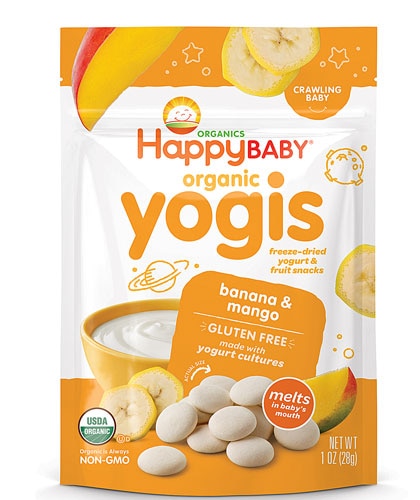Your infant’s nutrition likely tops your list of priorities. For good cause, too: Nourishment plays an imperative role in everything from your baby’s brain development to her attention span and bone strength.
But hit the six-month mark—when The American Academy of Pediatrics recommends that infants receive more nutrition than what’s supplied through breast milk or formula alone—and many mothers find themselves daunted by what rests ahead. The foods to puree, the baby food jars to purchase, the list of complementary foods their child may or may not stomach—it can all seem like a tiring next step for a parent who is probably already spent.
Enter baby-led weaning. First popularized in the U.K. with the publication of Gill Rapley and Tracey Murkett’s Baby-Led Weaning, the technique is gaining traction in the U.S. and beyond (to say nothing of the fact that it’s long been practiced by other cultures around the globe). Based on the concept of autonomy—or, rather, supervised autonomy—baby-led weaning is a hands-off approach to feeding your child. In short, instead of spoon-feeding your child, baby-led weaning permits children to select and self-feed finger foods. In doing so, your child may benefit from a range of benefits, including enhanced dexterity, improved hand-eye coordination and chewing skills.
What’s more, self-feeding allows a child to learn self-regulation from an early age. “Babies who self-feed cannot realistically be made to eat more than they need since they are feeding independently,” pediatric dietician and co-writer of Real Baby Food Natalie Stasenko says. When feeding your infant, “Parents can sneak in a couple more spoonfuls even if the baby is full. Doing so frequently will teach the baby to routinely eat more than he needs and stop regulating his intake efficiently.” And while few scientific studies have been conducted about the long-term effects of baby-led weaning, the National Institutes of Health reports that “evidence is building” to support the method’s promotion of healthy eating habits and weight control.
Ready to get started? Here are 5 top tips for letting your little one lead the way:
1. Stay present
Baby-led weaning should not be confused with placing a tray in front of your child and disappearing to tend to the laundry.
First, the “weaning” here is a misnomer, as breast feeding or formula should continue to be your child’s primary source of nutrition until they’re 10-12 months old.
Secondly, your baby will need to be supervised as she feeds herself—not only to ensure she doesn’t choke on the foods she’s consuming but to also keep an eye on allergic reactions. To this end, introduce a new food only every four days or so to determine allergies. (According to the CDC, the eight most common allergenic foods are milk, eggs, fish, shellfish, tree nuts, peanuts, wheat, and soybeans.)
Lastly, you must be present to guarantee that your baby remains upright while eating—baby-led weaning can only be used with children that are “able to sit in a high chair unassisted, have good neck strength, and be able to move food to the back of her mouth with up and down jaw movements,” Parents reports. Many parents choose to feed their infant at the family dinner table, which grants them the ability to monitor, socialize and bond with them as they eat.
2. Temper your reaction to gagging
You want to oversee your child’s meal or snack—but you don’t want to scare him. Overreacting to his gagging is bound to terrify him, which is why it’s vital to recognize the difference between gagging and choking.
“When babies gag, they’re handling the problem themselves, and it’s best to just stay calm (or at least look calm) and wait until it passes,” What to Expect advises. “The gagging will ease up as baby learns to cope with the solids and the lumps.” Gagging looks like mild coughing and arrives with a little noise, while a choking child will look frightened, be unable to breathe, and won’t make any noise. (With this in mind, it’d be wise to learn the pediatric Heimlich maneuver.)
3. Make the food appealing to your child
Giving your child appropriately-prepared foods is critical to successful baby-led weaning. Your intuition may tell you to chop up their food into tiny, bite-sized pieces, but your baby (and you!) will benefit more from thick sticks or slices. (Think of the mess here, too.) This will permit your child to hold the food in her fist and chew from the top down. (Experts also suggest forgoing utensils, plates, and bowls at this stage in the game, as children will throw them anyway.) You can also use a crinkle-cutter to cut up your child’s food, but only if the pieces are large enough to grasp.
4. Take necessary food precautions—and offer your child a variety of eats
One of the beauties of baby-led weaning is that it allows children to explore an array of tastes and textures. Over time, this will help your infant develop a more daring palate (and render him a less picky eater later in life). Offer foods with different textures—smooth bananas, crisp melons, puffed cereal—and different colors (such as sweet potatoes, avocados and ricotta cheese). Ensure that no foods that pose a choking hazard are served—such as hot dogs, grapes, raisins, and popcorn—and make a concerted effort to serve your child high-calorie, nutrient-rich foods.
5. Go with the flow
Your child may love self-feeding herself one day and seemingly despise it the next—just as she may eat well (and properly, at least for an infant) in the morning and toss her food onto the ground come dinner. The point is to ease up on expectations. The process of baby-led weaning is just as much of an exploration for a parent as it is for a child, and being able to go with the flow of it all without panicking—or getting overly emotional— plays a huge role in the technique’s ultimate success. Which, come to think of it, is also key to a healthy, happy life.




